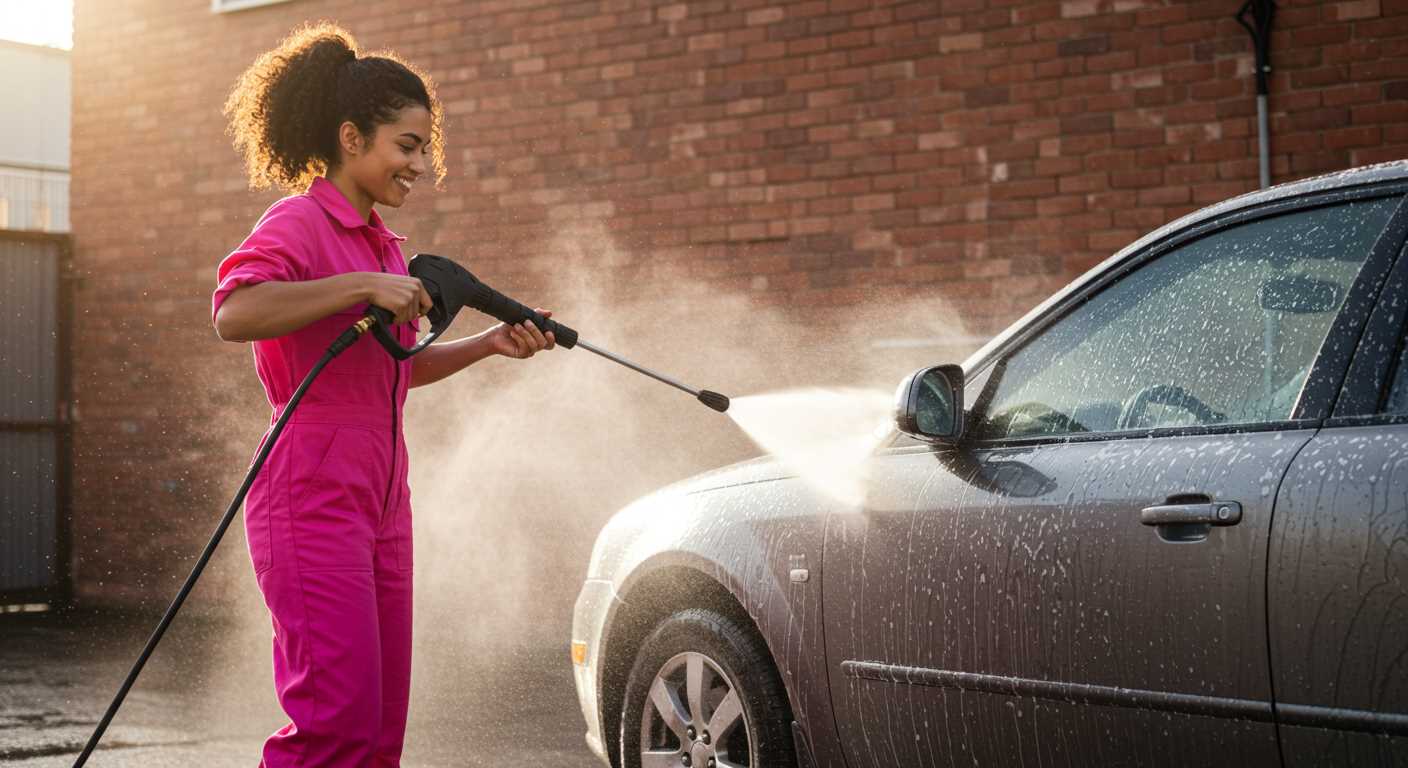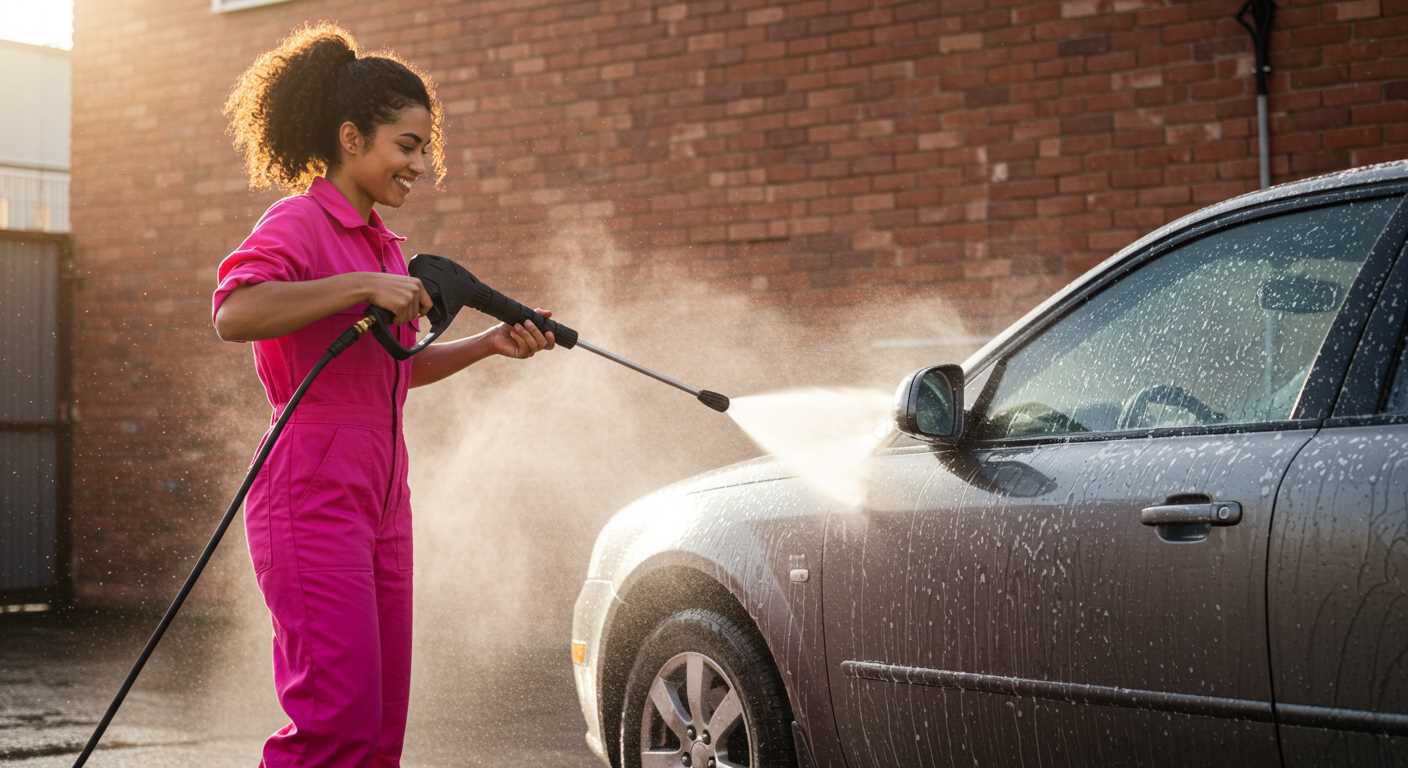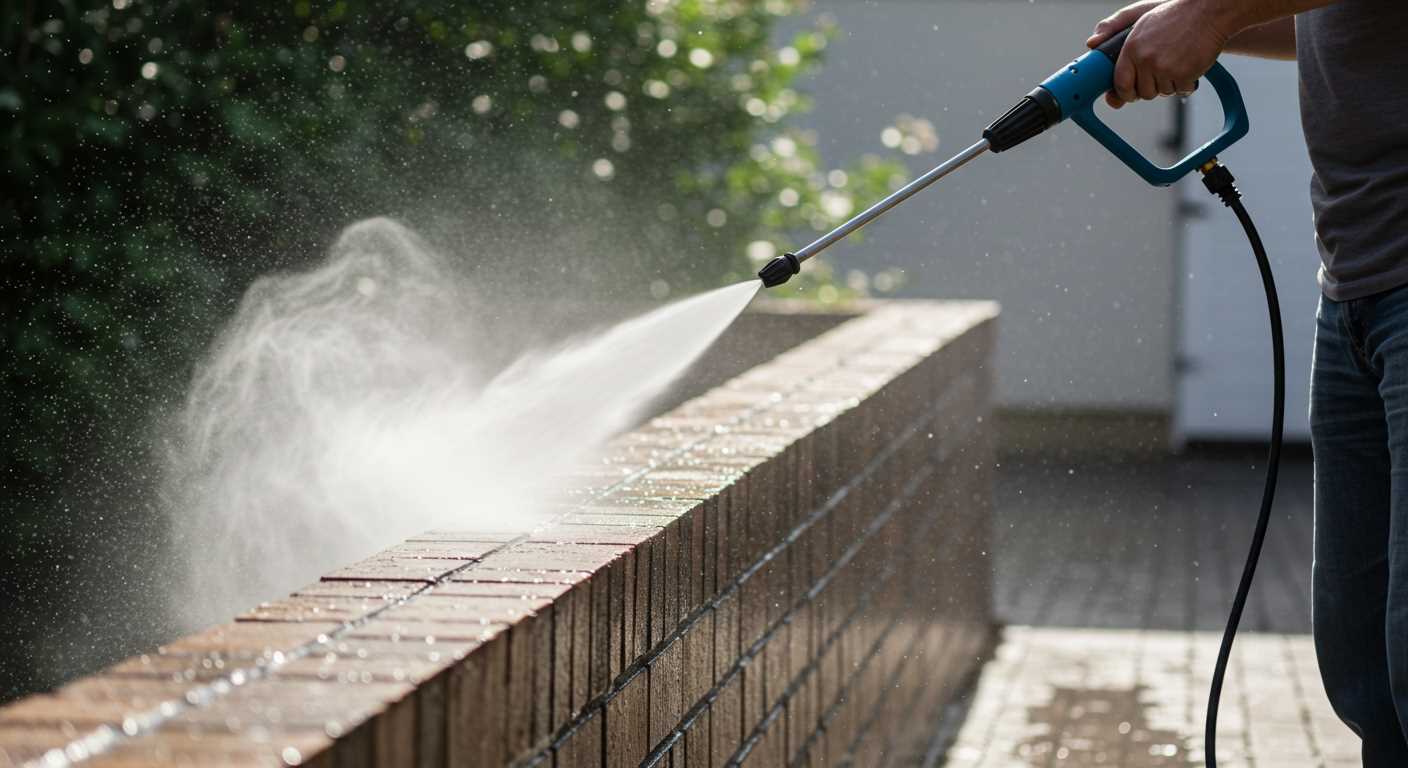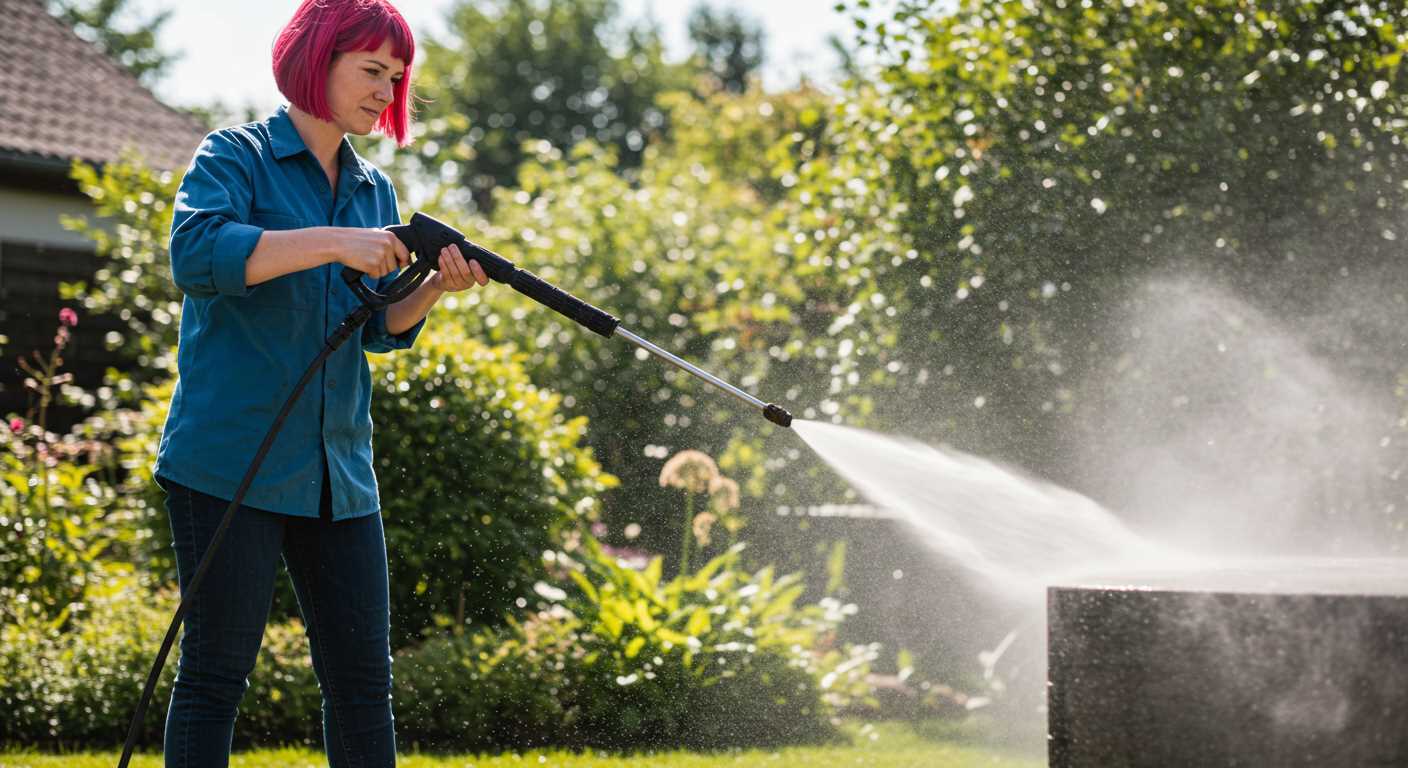




Always start with the correct nozzle for your cleaning task. A narrow nozzle is perfect for tough grime, while a wider one suits delicate surfaces. I remember the first time I used a narrow nozzle on a wooden deck; it stripped off more than just dirt and left marks. Lesson learned!
Next, ensure you have all necessary safety gear. Goggles and gloves should be your first line of defence against flying debris. I once neglected to wear gloves while cleaning a driveway, and the recoil from the water pressure left my hands sore for days. Protect yourself to avoid unnecessary mishaps.
When it comes to surface preparation, rinse the area before applying any cleaning solution. This removes loose dirt, allowing the detergent to bond better with the grime. In my experience, this step makes a noticeable difference in the final clean. I consistently achieve better results when I don’t skip this part.
Finally, maintain a consistent distance from the surface being cleaned. Too close, and you risk damage; too far, and you won’t achieve the desired cleanliness. I found that maintaining about two feet away provides a good balance, ensuring effective cleaning without harm.
Choosing the Right Pressure Cleaner for Your Needs
First, assess the tasks at hand. For heavy-duty work like stripping paint or cleaning large areas, opt for a machine with a high PSI (pounds per square inch). A model with at least 3000 PSI will tackle tough jobs efficiently. For lighter tasks such as washing vehicles or patios, a unit around 1500 to 2000 PSI suffices.
Next, consider the flow rate, measured in GPM (gallons per minute). Higher flow rates mean quicker cleaning. If you’re working on extensive surfaces, select a unit with a GPM of 2.5 or more. For smaller jobs, 1.5 to 2.0 GPM is adequate.
Electric models are quieter and easier to maintain, making them ideal for residential use. However, if portability and power are priorities, petrol-powered machines deliver more pressure and are suitable for larger, outdoor areas. I remember using a petrol unit at a friend’s farm, and it handled mud and grime with ease, saving us hours of work.
Look for versatility in attachments and nozzles. A model with adjustable nozzles allows you to switch from a narrow beam for tough stains to a wider spray for delicate surfaces. I often found myself switching nozzles while cleaning my patio, as certain areas required a gentler touch.
Lastly, think about storage and transport. Some machines are bulky, while others are compact and easy to manoeuvre. I’ve struggled with heavy models that were cumbersome to move around. A lightweight unit with wheels makes the job much more manageable.
Preparing the Area for High-Pressure Cleaning
Before starting the cleaning process, ensure the area is ready. Clear the space of any obstacles that could hinder your work. This includes furniture, garden tools, and decorative items. If you’re working on a patio or driveway, move away any cars or bicycles.
- Check for loose items: Remove all small objects such as plant pots, hoses, and outdoor decor.
- Secure nearby plants: Cover delicate plants with tarps or plastic sheets to protect them from the force of the water.
- Inspect the surfaces: Look for cracks or damage on the surfaces you intend to clean; this will help avoid exacerbating existing issues.
Additionally, identifying any electrical outlets or fixtures nearby is critical. Water and electricity do not mix well. Ensure to cover or seal any exposed outlets to prevent accidents.
- Rinse the area: If the surface is heavily soiled, a quick rinse can help loosen dirt and debris.
- Choose the right cleaning solution: Depending on the material, some surfaces may require specific cleaners. For guides on cleaning various materials, including leather, refer to the how to clean leather ultimate guide for leather cleaning.
- Test a small area: If you’re unsure about a surface, always do a spot test with the cleaner to ensure no damage occurs.
Lastly, ensure you have a clear plan for where the water will drain. Setting up a path for runoff can prevent pooling and potential damage to your property.
Selecting the Appropriate Nozzle for Different Surfaces
Choosing the right nozzle is crucial for achieving optimal cleaning results without damaging surfaces. Based on my experience, I’ve found that different surfaces require specific nozzle types to enhance efficiency and protect materials.
Types of Nozzles
Most machines come with a variety of nozzles, typically colour-coded for easy identification:
| Nozzle Colour | Angle | Recommended Surfaces |
|---|---|---|
| Red | 0° | Concrete, heavy-duty stains |
| Yellow | 15° | Patios, driveways, and brick |
| Green | 25° | Wood decks, painted surfaces |
| White | 40° | Cars, glass, and light cleaning |
| Black | Soap | Applying detergents |
Tips for Surface Selection
For concrete, the red nozzle is effective for tough stains but should be used at a distance to avoid etching. The yellow nozzle works well on patios, where stubborn grime can be removed without causing damage. For wooden surfaces, the green nozzle is ideal; it delivers enough pressure to clean without stripping paint or splintering the wood. When tackling vehicles or windows, the white nozzle ensures a gentle touch while still providing adequate cleaning.
Always test in a small, inconspicuous area before proceeding with the entire surface. This approach helps prevent any unexpected damage, allowing you to adjust your technique as needed. Remember, the right nozzle not only optimises cleaning but also protects your investment in surfaces and equipment.
Step-by-step guide to operating the pressure cleaner
Ensure you have all necessary equipment ready before you begin. This includes the cleaner, a suitable extension cord, and protective gear. I always recommend wearing goggles and gloves to protect yourself from debris and high-pressure water.
1. Connect the Equipment
- Attach the water supply hose securely to the inlet of the device.
- Make sure the other end of the hose is connected to a reliable water source.
- Plug in the power cord to an appropriate outlet, ensuring it’s away from any water source.
2. Prepare for Operation
- Turn on the water supply and check for leaks in the hose and connections.
- Start the machine by following the specific instructions for your model.
- Let the device run for a minute to build up pressure before using the trigger.
During my time in the industry, I’ve found that a common mistake is rushing this step. Taking a moment to ensure everything is functioning properly can save you a lot of hassle later.
3. Engage the Trigger
- Stand at a safe distance from the surface you’re cleaning.
- Point the nozzle away from you and press the trigger to release the water.
- Gradually approach the surface, maintaining a consistent distance, usually around 30-40 cm.
When I first started, I made the error of getting too close. The result? A damaged surface and a lot of frustration. Remember, it’s better to start further away and adjust as needed.
4. Move Methodically
- Use a sweeping motion to cover the area evenly.
- For stubborn stains, pause briefly on the affected area but avoid staying too long to prevent damage.
- Keep the nozzle at a consistent angle for optimal results.
I’ve always found that patience is key. Sometimes, a little extra time spent on a tough spot pays off dividends in the end.
5. Shut Down Safely
- Release the trigger to stop the flow of water.
- Turn off the water supply and disconnect the hose from the machine.
- Unplug the device and allow it to cool down before storing.
After years of experience, I can’t stress enough how important it is to follow these shutdown procedures. It not only ensures your equipment lasts longer but also keeps you safe.
By adhering to these steps, you’ll achieve impressive results while minimising risks. Happy cleaning!
Safety Precautions to Follow While Operating Equipment
Always wear safety goggles to protect your eyes from debris and chemicals. I remember a day when I was cleaning a driveway, and a small stone shot out from the surface, barely missing my eye. From that moment, goggles became non-negotiable for me.
Protective Gear
Use gloves made from high-quality rubber to shield your hands from chemical exposure and to maintain a firm grip on the equipment. Steel-toe boots are also advisable to prevent foot injuries from any heavy objects that might fall.
Area Management
Ensure that children and pets are kept at a safe distance while working. It’s easy to get caught up in the task and forget about what’s around you. I once had to stop abruptly because my dog decided to run into the line of fire, proving that distractions can happen at any moment. Lastly, always check your surroundings for hazards like power lines or slippery surfaces before you start.
For those considering a robust machine, explore honda powered pressure washers, which are known for their reliability and performance. Just remember to prioritise safety while operating any cleaning equipment.
Maintaining Your Equipment for Longevity
Regular attention to your equipment can significantly extend its lifespan. After years of experience, I’ve found that a few simple practices make a big difference. Always flush the system with clean water after each session. This removes any soap residue or debris, preventing clogs and build-up that can lead to costly repairs.
Routine Checks
Inspect the hoses regularly for any signs of wear or damage. Cracks or leaks can quickly escalate into bigger problems. Replace any worn-out parts immediately. Remember, a small investment in maintenance can save you from a major repair bill down the line.
Also, keep an eye on the filters. Clogged filters can hinder performance, reducing efficiency. Clean or replace them as necessary, ensuring your unit operates at its best.
Seasonal Preparation
Before winter or prolonged storage, drain the detergent tank and the water from the system. This prevents freezing, which can cause severe damage. Adding a pump protector can also safeguard against cold temperatures. It’s these small steps that ensure your machine is ready to go whenever you are.
Finally, store your equipment in a dry, sheltered place. Exposure to the elements can lead to rust and corrosion, shortening its lifespan. With a little care and attention, your machine will serve you well for years to come.






.jpg)


